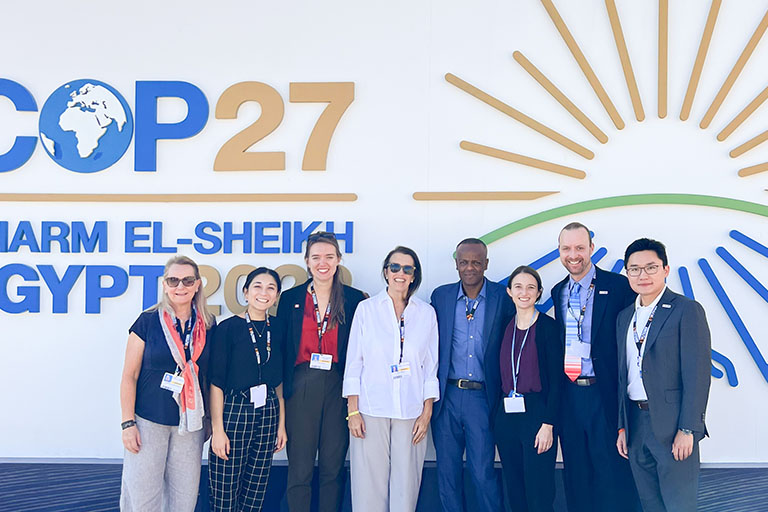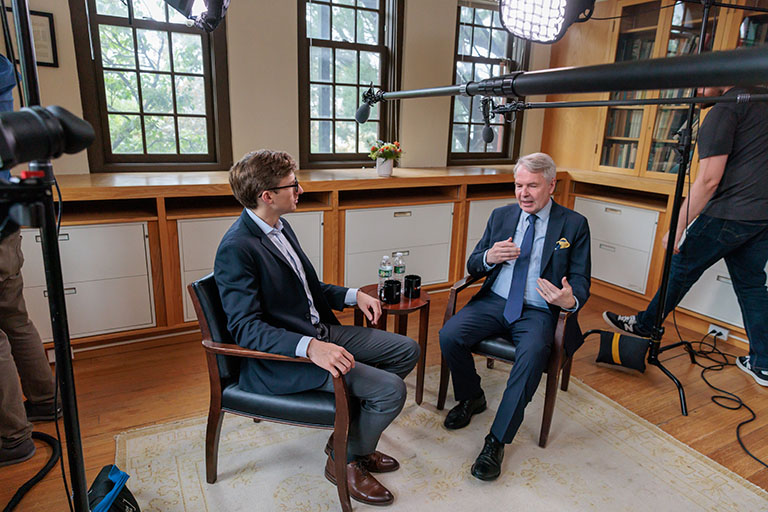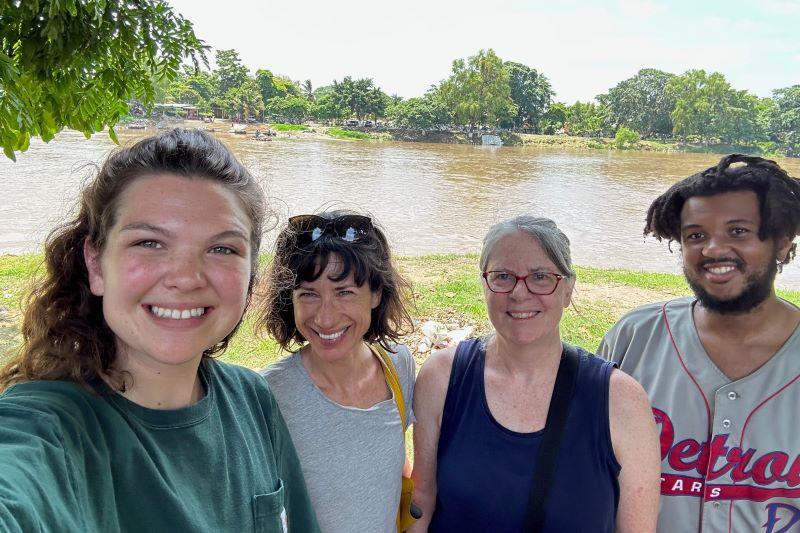-

Hear from Professor Monica Toft
Learn how Professor Monica Toft is shaping the study of global affairs and diplomacy at Fletcher.
Hear from Prof. Toft -

Explore Fletcher academics in action
Fletcher Features offers insights, innovation, stories and expertise by scholars.
Get global insights -
Get application tips right from the source
Learn tips, tricks, and behind-the-scenes insights on applying to Fletcher from our admissions counselors.
Hear from Admissions -

Research that the world is talking about
Stay up to date on the latest research, innovation, and thought leadership from our newsroom.
Stay informed -
Meet Fletcherites and their stories
Get to know our vibrant community through news stories highlighting faculty, students, and alumni.
Meet Fletcherites -

Forge your future after Fletcher
Watch to see how Fletcher prepares global thinkers for success across industries.
See the impact -

Global insights and expertise, on demand.
Need a global affairs expert for a timely and insightful take? Fletcher faculty are available for media inquiries.
Get in Touch
Hopes, Fears, and Illusions
Leir Institute project looks at migrants’ information-gathering and assessment of risk along their journey

Professor Katrina Burgess has long been interested in the human stories of migration often obscured by the narratives promoted in the media and politics in the United States. Over the summer, Burgess and Kimberly Howe led a group of student researchers in a new project with the Henry J. Leir Institute for Migration and Human Security, designed to generate data on migrants’ decision-making processes that privileges migrant voices.
“The initial motivation for the project for me was growing frustration with a strategy that has come to be called prevention through deterrence, which is essentially this idea that if we can make the journey and access to the U.S. as difficult and costly as possible, people will stay home,” said Burgess.
“It seemed rather obvious that this was not working. The strategy is accompanied by a set of assumptions about why migrants come, where they're getting their information, and how that information is shaping their decision-making.”
Having worked with migrants for years, Burgess saw a disconnect between perception and reality: prevention through deterrence was not working as a policy and, in the process, was causing human suffering. Thus, the project, Hopes, Fears, and Illusions, was born.
“The objective was to try to get at that question of why people are coming,” said Burgess. “I really wanted to focus on this question of risk and information. How do migrants assess the risks of staying home versus leaving? How is information that they're receiving at various junctures along their journey being filtered through their assessment of risk?”
The Domain of Loss
Alongside Howe, Burgess designed Hopes, Fears, and Illusions to gain insight into the decision-making processes of migrants on the move. In order to collect snapshots from different points along the journey, they deployed teams of student research assistants at five important points: Necocli, Colombia, prior to the dangerous crossing of the Darien Gap; Paso Canoas, Costa Rica, following the crossing; Los Chiles, Costa Rica, a town just south of the country’s border with Nicaragua; Tapachula, Mexico, just north of the Guatemalan border; and Tijuana, Mexico, just south of San Diego.
Following some initial training on campus, the student research assistants embedded in local organizations. In Mexico, they worked with migrant shelters, and in Costa Rica and Colombia, they partnered with other local organizations. Building trust by working with these local partners, they interviewed migrants about their stories, creating a series of ethnographic snapshots.
Though the group continues to analyze the accounts they gathered, Burgess has seen her working hypothesis begin to bear out.
Drawing from prospect theory in behavioral economics, Burgess sought to assess whether migrants are making their decisions within the domain of gain or the domain of loss. Domains are frames within which people weigh options with different values and probabilities. When a choice is framed in terms of gains, most people will be risk averse and choose the safer option even if it has a lower return. The opposite occurs when the choice is framed in terms of losses: most people would rather gamble on a low-probability loss than accept a high-probability one, even if the latter is less costly.
“My working hypothesis is that a lot of migrants are actually in this domain of loss, where they're comparing certain loss at home with uncertain loss if they leave. The latter could be death, losing a limb, illness, kidnapping—the risks are very high, but they're uncertain. Whereas at home, the risks might be a little lower, but they’re perceived as certain.”
“What prospect theory finds is that when people are in this domain of loss, they take greater risks. That really resonated for me based on interactions I've had with migrants and what I've read about migrants.”
The student researchers spoke with single adults and parents with small children. Along the journey, certain throughlines emerged. Many people voiced a desire to provide a better future for their children because they did not see such a future at home. Burgess also noted that many respondents spoke about a sense of hopelessness at home contrasted with hope for a better life, oftentimes guided by their faith, through the journey.
Innovative Methodology to Improve Understanding
One of the core tenets of the Leir Institute is innovative methodology. Students conducted the majority of their interviews in migrants’ native tongues, most often Spanish. One researcher was a fluent French speaker and conducted interviews with Haitian migrants in French. They also took detailed field notes and wrote short excerpts for a Notes from the Field story map published on the Leir Institute’s website.
Burgess and Howe worked together to implement a trauma-informed research process, both in order to train students to complete more ethical and thoughtful interviews with the migrants and to support students as they listened to harrowing stories about the journey. Additionally, with Leir’s focus on cultivating student talent, Burgess and Howe gave careful thought to supporting students in their careers as researchers and practitioners.
Now as they assess the data, Burgess is looking at next steps. The project was funded by a Tufts University Springboard Grant, and the team wants to use this ethnographic experience to scale up their data gathering and reach even more methodologically rigorous conclusions. Burgess is also considering the potential for these findings to effect change both on the ground and in policy.
“If we can provide some understanding of why the policy is not working,” said Burgess, “there might be some rethinking of whether the U.S. government should continue to insist on these deterrence-oriented policies, and whether it might not make sense to shift to providing more safe and regular pathways for people to make these journeys, to make the process of trying to get to the U.S. less costly, not just from a financial perspective, but also from a human perspective.”
Read more about the project, the Leir Institute, and Fletcher’s Human Security and Humanitarian Affairs field of study.


